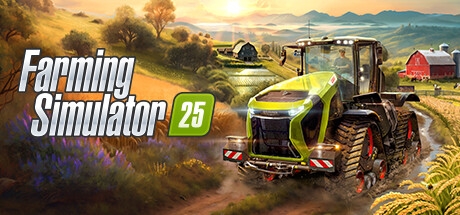Farming Simulator 25 marks yet another significant entry in the beloved franchise that allows players to immerse themselves in the life of a farmer. With a combination of realism, engaging gameplay mechanics, and an expansive open-world environment, Farming Simulator 25 provides players with the ability to cultivate their crops, manage livestock, and operate a diverse array of vehicles and machinery. The RR88 game serves as both an escape into rural life and an education on modern agricultural practices, making it appealing for seasoned farming enthusiasts and newcomers alike.
A Deep Dive into Gameplay Mechanics Farming Simulator 25
The essence of Farming Simulator 25 lies in its gameplay mechanics which are designed to create a realistic farming experience. Players can engage in various tasks such as planting crops, harvesting, and managing finances. The depth of these mechanics enhances the overall gaming experience and allows for strategic planning
Farming Operations
Farming operations in Farming Simulator 25 are at the heart of the gameplay.
Every aspect is meticulously crafted to simulate real-life farming tasks. Players start by choosing their land, which varies in size and type, affecting crop yields. Different soils may require distinct strategies for fertilization and planting, prompting players to research what works best for their specific situation.
In terms of operating machinery, the game introduces a plethora of equipment options—tractors, seeders, and harvesters, each with unique specifications. This variety encourages players to think critically about their purchases and investments. For example, while a high-capacity harvester could mean quicker work when harvesting, it also presents higher operational costs that could affect profitability.
As players progress, they might explore crop rotation, learning how different crops interact with soil health and yield. Implementing this strategy not only optimizes production but also aligns closely with sustainable farming practices. Moreover, managing seasonal cycles adds another layer of realism, as players must plan their activities around the changing weather and seasons.
Livestock Management
Managing livestock brings a whole new dimension to Farming Simulator 25.
Players can breed and raise various animals, including cows, chickens, and sheep. Each type of livestock contributes differently to the farm’s productivity. Cows provide milk, which can be sold or processed into cheese, while chickens produce eggs, offering a steady income stream.
To ensure their animals thrive, players must pay attention to their needs, including feeding, shelter, and health care. This level of detail not only enriches gameplay but also instills a sense of responsibility and commitment towards the farm’s inhabitants. It also compels players to devise clever strategies to optimize feed resources and manage animal welfare efficiently.
Breeding can also become a central focus as players aim to improve the quality of their livestock over time. Investing in better genetics or selecting superior breeding pairs can yield higher production rates and healthier animals, reflecting real-world agricultural practices.
Economic Simulation Farming Simulator 25
The economic simulation within Farming Simulator 25 is robust and multifaceted.
Players must carefully balance between spending and earning while taking into account fluctuating market prices for their goods. The game’s economy mimics real-life agricultural markets, where crop prices can rise and fall based on supply and demand. This requires players to remain vigilant about market trends and make strategic decisions about when to sell their harvests.
Moreover, players can take out loans to expand their operations or invest in new technology. However, poor financial management can lead to debt and potential bankruptcy, pushing players to adapt quickly and develop sound business practices.



